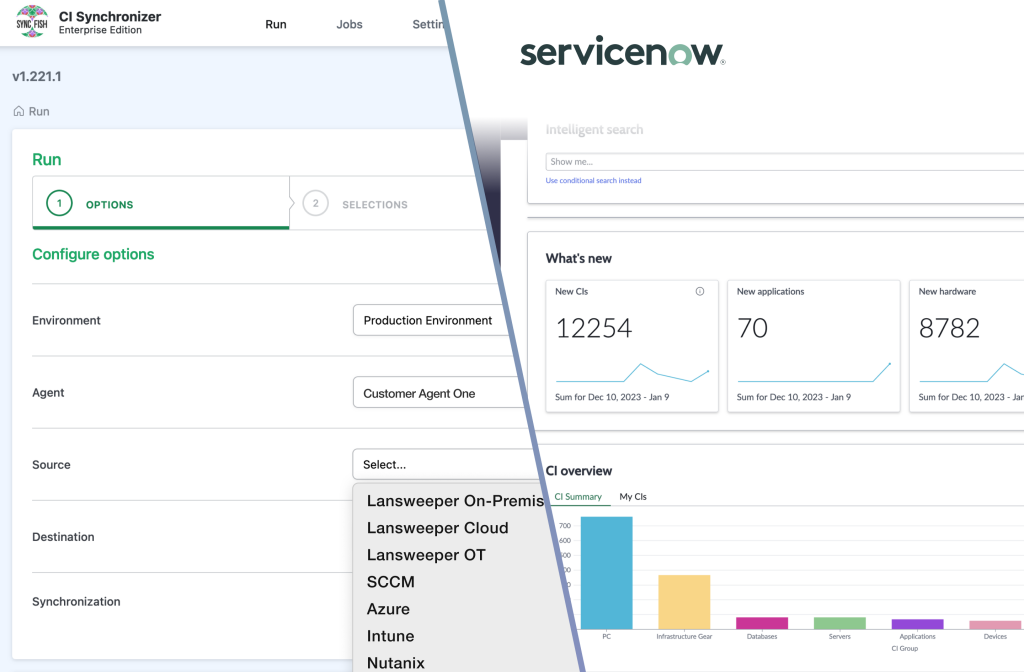ServiceNow is a cutting-edge cloud platform revolutionising business workflows. Core to its suite of modules and applications is the CMDB (Configuration Management Database), a pivotal element for orchestrating IT operations. Integrating CI Synchronizer with ServiceNow yields incredible advantages, transforming your IT operations with unparalleled efficiency and precision.
The ServiceNow connector requires almost no ServiceNow configuration: just a set of user credentials (and optional OAuth setup) to be up and running.
No ServiceNow ITOM (IT Operations Management) license required.
No configuration of ServiceNow IRE rules required.
Does not require custom applications to be installed and does not require custom tables/fields to be created.
CI Synchronizer can be configured to cater for ServiceNow CMDB customisations.
The ServiceNow connector supports ingestion of data from any of the CI Synchronizer Source Connectors.


























